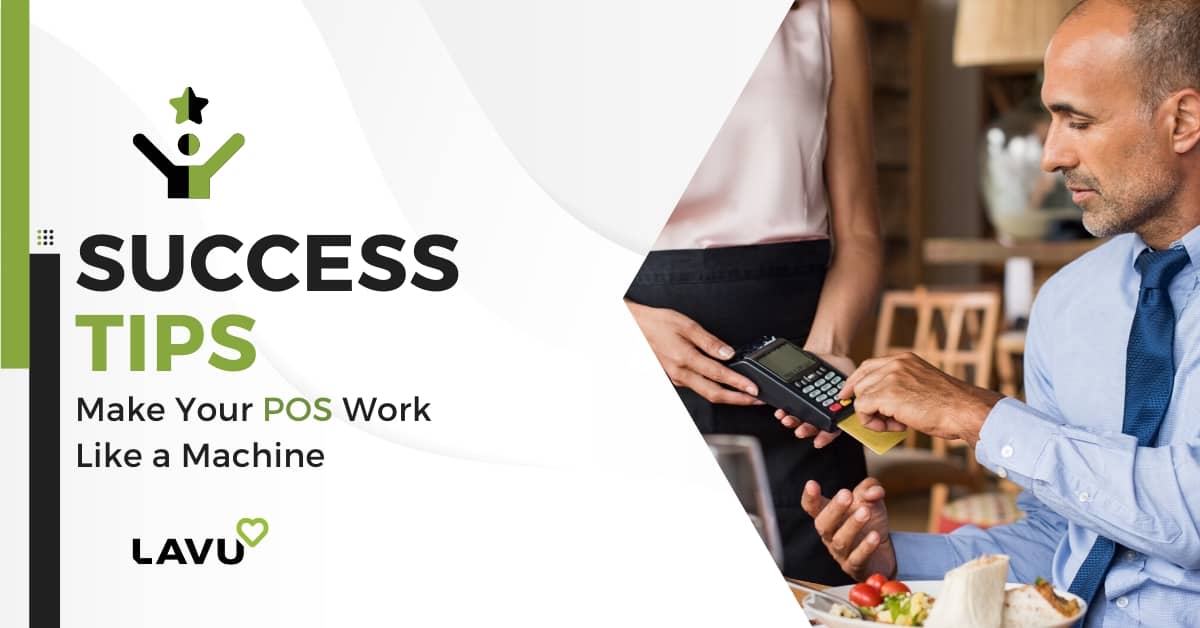
Whether you’re just about to hang the “Open for Business” sign on your front door, or you’re a business ready to expand, you need to think about your point of sale system (otherwise known as POS). At the most basic level a POS system is the combination of software and hardware used to process payment transactions. A good POS is the key to a running a smooth operation. Not only does it help to keep the orders flowing and the cash coming in, but it can also boost your bottom line. While there is no magic equation to restaurant profitability, run your POS like a well-oiled machine and get ready for smooth-sailing when it comes to boosting profits.
The Basics
The right POS system provides a powerful platform to boost sales and streamline operations. It gives you a solid foundation for all of your information requirements and application needs, so you can focus on growing your business. In recent years, POS has become more accessible to retailers, in terms of both affordability and practicality. The bulky and cumbersome POS systems of old have given way to sleek, portable devices. A retailer nowadays can manage transactions, customers, inventory, employees and analytics all through the system that works for them, be it in a traditional terminal or sleek iPad POS system.
New and Improved POS
Meet your in-house team. Your POS, acting as an in-house IT team, can provide inventory management; customer CRM (customer relations management); the ability to track employee hours, data and payroll; as well as take and process orders among many other functions. Whether you are attempting to maintain customer loyalty, collect demographic profiles, fuel directed marketing campaigns or understand customer habits, go beyond simple transactions. Get to the heart of your business by accessing the customer data at your fingertips that can be analyzed, categorized, tagged or filtered and turned into focused, meaningful actions.
Marketing
Customer relationships begin and end at the POS. This is where you capture their names and addresses, learn what products they enjoy and continue the conversation with them so they return to the store again. When customer relationships are optimized, they’ll spend more money more often.
Loyalty
Connect with customers, boost repeat visits and increase ticket averages. How? By marketing smarter, not harder. By tying your POS to your marketing program, get to know your customers better by building a database. From top customers, ordering history, birthdays, allergies and more, your database can be customized and automated. With your POS on top of the details and organization, you can spend time being creative.
Turn Customers into Regulars
Use your POS to market your businesses and encourage repeat visits in addition to managing payments and processing transactions. Step up the game by instantly providing your customers with the benefits such as loyalty programs, mobile coupons and more, within your existing POS infrastructure. Don’t use two separate platforms to process payments and run customer rewards programs when you could use just one.
Use Wi-Fi Technology to Speed the System
Choose a fast wireless Internet package to make your POS work seamlessly. With a solid connection, you can bill items, conduct inventory checks and swipe credit cards faster than ever. Using a separate credit card system can slow down your POS process, so try integrating your credit card swipes with your POS system. Most vendors do offer this service. By integrating your credit card system, you could process payments in seconds.
Use Easy-To-Load Receipt Printers
To prevent downtime due to printers running out of paper, make sure you run diagnostics before your store opens every day. Check the printer and ensure that the paper roll is full. In case the roll runs out, use easy-to-load printers and keep the rolls handy. Most of the latest thermal printers are quite easy to operate. They are also quite rugged as they work all day long. Choose a name brand printer with a good warranty and you will not have problems.

